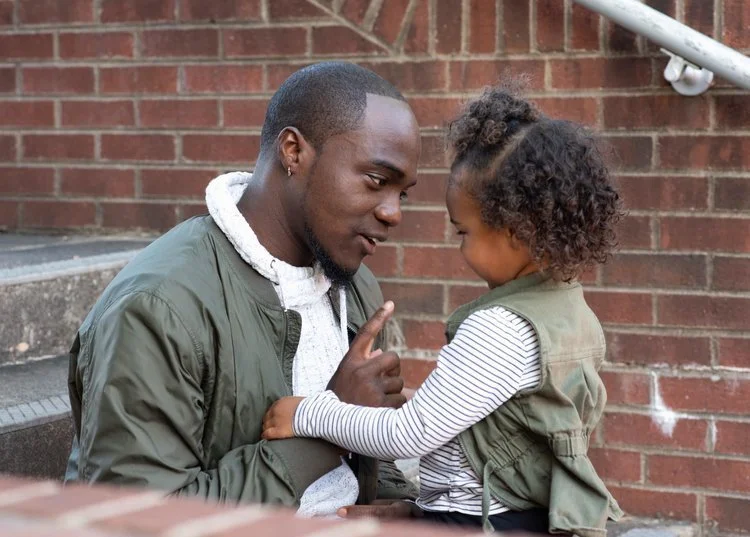African American Experience in Burke County
Overview
From its inception, America has storied itself as the “land of opportunity.” This beckoning ideology has invited people over the world and across time to come in search of something “better.” Immigrants often come with origin stories that carry ethnic history, culture, traditions, struggles and accomplishments.
The ancestors The ancestors of most contemporary African Americans, however, came as a result of forced migration and did not come here voluntarily. The standard origin story of Blacks in America goes back to some twenty enslaved Africans who arrived in 1619 during the country’s first recorded engagement with the Transatlantic Slave Trade, “the largest long-distance forced movement of people in recorded history”. The arrival of this small group set the stage for the creation and evolution of a slave society that is unique to human history.
American chattel slavery accomplished the removal, assimilation, and enslavement of people of distinct ethnic groups by breaking their physical and ancestral connections with Central and West African nations, and by re-identifying them as members of one broad “Black race” with a single, generic origin story. The histories and traditions of African descendants in America did not go back to acknowledge the diverse indigenous cultures and distinct ancient civilizations of Africa. Instead, the revised and essentialized origin story started with slavery, and stripped both the continent of Africa and descendants of its sub-Saharan region of their deep histories and extensive ethnic diversity and advanced the interests of slavery.
“Origin stories matter, for individuals, groups of people, and nations. They inform our sense of self, telling us what kind of people we believe we are, what kind of nation we believe we live in. They usually carry, at least, a hope that where we started might hold the key to where we are in the present…But in the case of Black people, the limitations of the history and possibility of our origin stories have helped create and maintain an extremely narrow construction of Blackness.”
— Annette Gordon-Reed, Pulitzer Prize and McArthur Genius Award winning Author and Harvard University Professor of History
At the time of the first federal census in 1790, 7% of Burke County’s population was enslaved people of African descent. By 1850 the slavery business was at its peak here and unfree Blacks comprised 27% of Burke County’s total population. This constituted one of the highest rates of enslavement in all 215 counties of the nine states that comprised America’s Appalachian region at that time.
Nine families formed Burke County’s slaveholding “planter” elite. Unfree labor was commonly leased out to other wealthy households who needed extra temporary labor, or to small farmers who couldn’t afford to own slaves. Enslaved people performed farm and domestic labor, skilled trades, work in gold mines and railroad enterprises, and did other tasks that supported their owners' diverse economic and entrepreneurial ventures. In 1850, the monetary value of enslaved people owned by Burke County households was 2.5 million dollars, which in today's dollars equates to approximately $114,535,384.00.
After the abolition of chattel slavery Blacks left Burke County in large numbers, dramatically reducing their population to 7.1% by 1870. In the early 20th century the onset of the local textile industry grew the Black population back to 12.9%, but this temporary bump was flattened when local mills stopped hiring Black workers. With little employment available other than domestic work, the Black population quickly dropped closer to its 2020 rate of 6.9%.
The history of race relationships between the white citizenry and the African American community in Burke County is much like it is in other Southern, rural communities: complex. Depending on the time period covered, the narrator, and the stories told, the experiences of local African Americans can be quite different because their stories demonstrate a variety of cultural viewpoints and concerns.
For Additional Context
African American Culture | As seen through…Darrion Evans
Darrion Evans served as a GearUP Coordinator for Burke County Public Schools. He loves to give back to local K-12 students because he is grateful for the many doors that were opened to him growing up in Morganton as a star high school (and later, university) basketball player. At the same time, Darrion has always wondered where he would be today if not for his athletic abilities.
As an elementary and middle schooler, Darrion remembers the excitement of waking up early on Saturday for games and the sense of local pride in Burke County teams. As the community came together to support its teams, race didn’t seem to matter and sports put everyone on common ground.
From middle school forward, as Darrion’s athletic skills began to develop and place him in the sports forefront, he began to experience racism in unexpected ways. He was invited into homes and activities that his Black teammates who were average players were not invited to, while White teammates who were average players were welcomed. As his Black teammates were consistently excluded, Darrion suspected that he was only included because of his value to the team.
When Darrion went to high school, he began to experience name calling and being picked on by White friends because of his dark complexion. He found, however, that the notoriety he received during basketball season temporarily suspended the racist jokes and comments aimed at him.
He also faced racism in social relationships when White girls’ parents would not allow their daughters to date him because he was Black. He even saw families divided when their daughters chose to date him in spite of the parents’ beliefs. In one instance, Darrion heard a girl’s grandparents say they would hang him or any other black boy from a tree in their front lawn if she dated them.
In situations such as these, Darrion’s uniform offered him no privileges, his sports platform didn't matter, and his character was challenged. He realized how differently he was viewed when his jersey came off and he wasn’t giving people competitive bragging rights. While he could have decided to be disrespectful to those negative actors, he chose to try to prove that Blacks & Whites are more alike than different and that relationships should be governed by character, not skin color.
Darrion says, “Here in Burke County, we are all on the same team and we all have a part to play! We may play different positions, have varying gifts and talents...but we all bring something valuable to the team. Let’s all start rooting for each other, supporting one another and high fiving when our team scores. It’s time to move on to a new narrative of viewing diversity as a win and unite as a community of one.”
Darrion with his daughter
Darrion with his family
Darrion playing for Lenoir-Rhyne University



